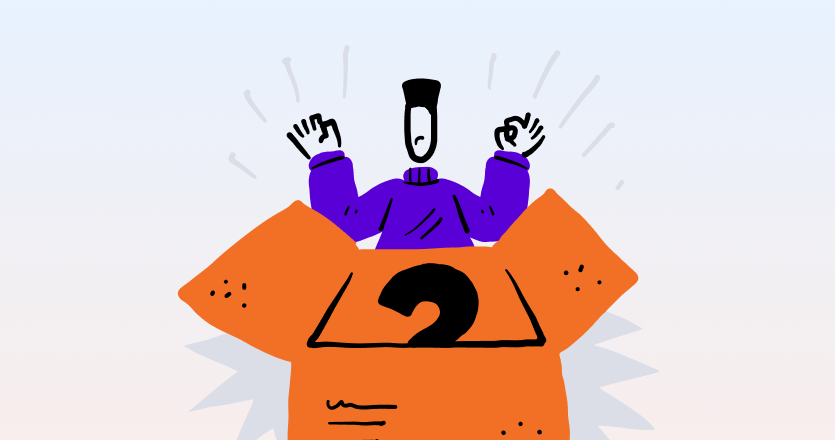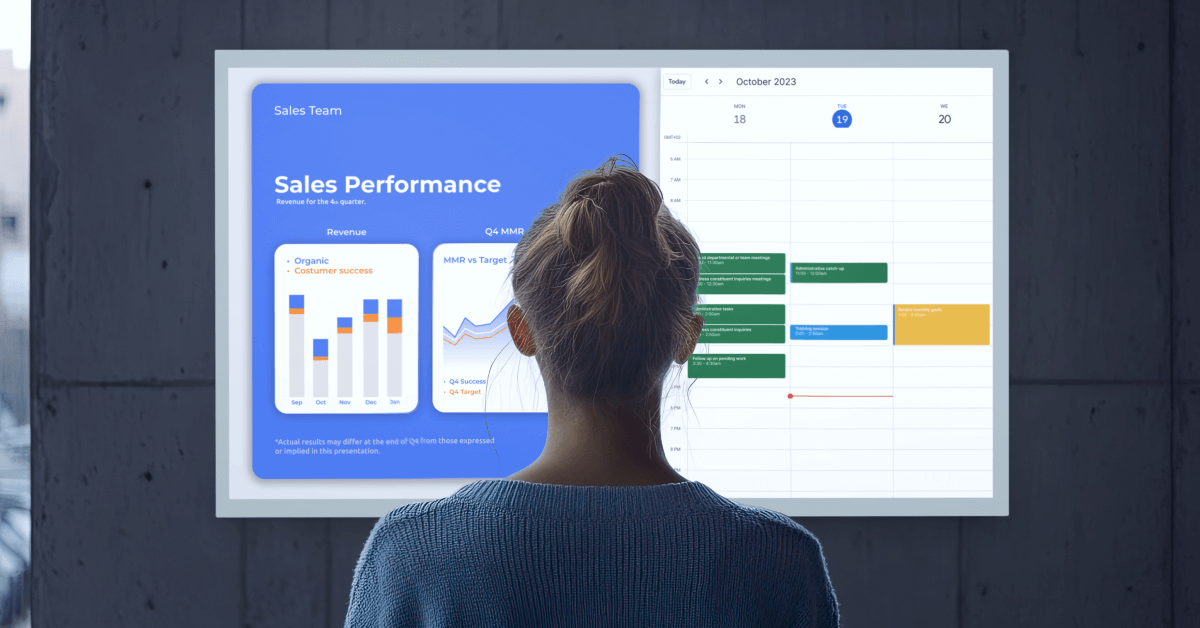Not every technology is right for every business at every stage.
And while we have yet to come across an industry or market where digital signage doesn’t add immediate value for a business, we understand that some teams might not be ready for digital signage just yet.
That’s why we’ve put together this article. Our goal is to help you determine whether digital signage is right for your business, right now. We’ll also offer practical advice that can help you get in the best position to adopt digital signage, so that you can start reaping the benefits of this powerful technology.
You might not be ready for digital signage if…
You don’t have a solid content strategy
Whether you plan on using digital signage to reach your internal teams or external audience, it’s important to consider where it fits into your wider content strategy before you actually put it into practice.
When it comes to your digital signage, identifying how and where you intend to use it, how you’re going to manage it, and how you plan to measure its impact and success, is key. Just as your website, social media accounts, email programs, and online ads are part of your digital content strategy, so is your digital signage. And if you’re planning to use digital signage to replace paper-based content, such as brochures, physical maps, or printed menus, you’ll need to consider how modernizing in this way might change how you work, or how you reach your audience.
It’s important to remember that while digital signage is a powerful tool on its own, it doesn’t always have to function as a stand-alone channel for your content and communications. With the right plan in place, digital signage can help you get more from the channels that you already use. For example, your team may choose to add a real-time social media feed to your digital screens, ensuring additional exposure for any content that you develop for those channels. You can also leverage digital screens to re-share important announcements or news that also live on other channels, making it easier for your intended audience to access critical information.
These are just a few examples of how digital signage can be seamlessly integrated into your current content strategy to provide near-immediate results. But this kind of harmony doesn’t just happen, it’s the result of a clear and thoughtful approach to content creation, delivery, and management that identifies exactly how your channels – including your digital signage – can work together to help you connect with your audience, and reach your wider goals.
You don’t understand your target audience
Connecting with your audience isn’t just the result of displaying beautiful content on a screen. It requires a deep understanding of their unique needs, wants, and goals.
If your business is new, undergoing an evolution, or for any other reason doesn’t have a solid grasp of what messages will resonate with your intended audience, digital signage – on its own – won’t change that. Digital signage is an incredibly powerful tool for helping organizations connect with their audiences, but the content that you decide to share across your digital screens won’t make an impact unless it actually engages, entertains, or informs the people who see it. And you can’t engage, entertain, or inform your audience unless you understand what they need to know, how to get their attention, and how to keep them interested.
The good news for teams who are eager to adopt digital signage is that you can actually use your digital screens to better understand your intended audience. For example: if your team is looking to engage shoppers in a retail or hospitality setting, you can use your digital screens to test ads and promotions with different hooks or calls-to-action, in order to see which messaging better engages your audience.
It’s important to understand that creating compelling content and creating beautiful content aren’t the same thing. Simply displaying dynamic or well-designed content on a digital screen doesn’t guarantee that your audience will engage. The first step towards creating the most impactful content possible is to understand what your audience needs and wants. From there, you can leverage digital signage to engage them in a meaningful way that makes an impact.
You’re unsure of the story you want to tell (or the information you want to share)
Digital signage is an incredibly effective way to tell your story and get your messages across. But if you’re not sure about your brand narrative, or if you haven’t decided what kind of information you want to share with your audience, then you have some work to do before you can expect digital signage to make an impact.
As with any content channel, success with digital signage begins with a clear idea about what it is you want to communicate. Whether you intend on using digital signage for ads and promotions, in office communications, news and announcements, or anything else, it’s important to first consider how your content fits into (and supports) the broader picture of your communications.

An Intelligent Platform supports the seamless adoption of digital signage
Your business might not be 100% ready to implement digital signage today. But it’s still important to consider which solution will best support your business, people, and goals.
Yodeck is the first and only intelligent digital signage platform. It’s purpose-built to be incredibly easy to adopt, use, and scale, and it’s a proven way for teams to refine their communications and build deeper connections with their audiences.
And for teams who haven’t used this kind of technology before, Yodeck helps ensure a seamless transition to digital signage. With access to a vast library of free templates and apps, your team can start creating beautiful, dynamic digital content in no time. Plus, drag and drop playlists make it easy for anyone, of any skill level, to instantly curate the perfect content journey for your audience.
And with user-friendly features that enable you to remotely refresh or update content in real-time, you’ll be in total control of your communications, from the minute you get set up, no matter which plan you choose.
– – –
To learn more about how Yodeck helps businesses around the world refine their communications and tell their most important stories, just browse our case studies.
If you’re ready to get started for free, just use this link.
*Katie Rose Hester is a senior content strategist and writer working with product-led businesses bringing interesting, helpful innovations to market.
